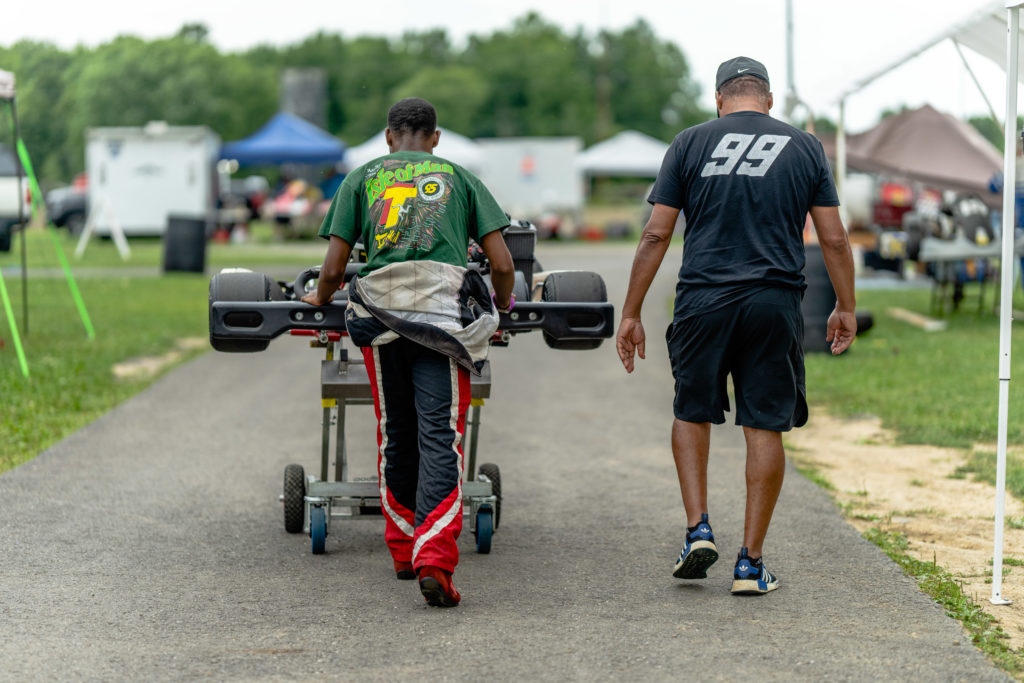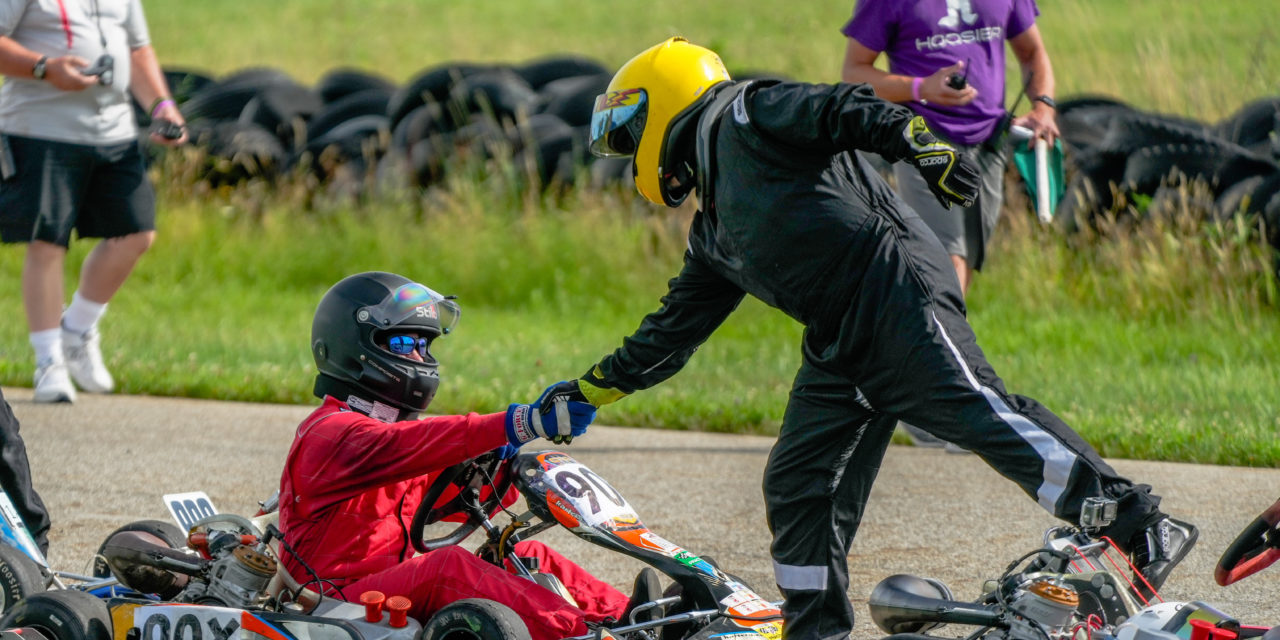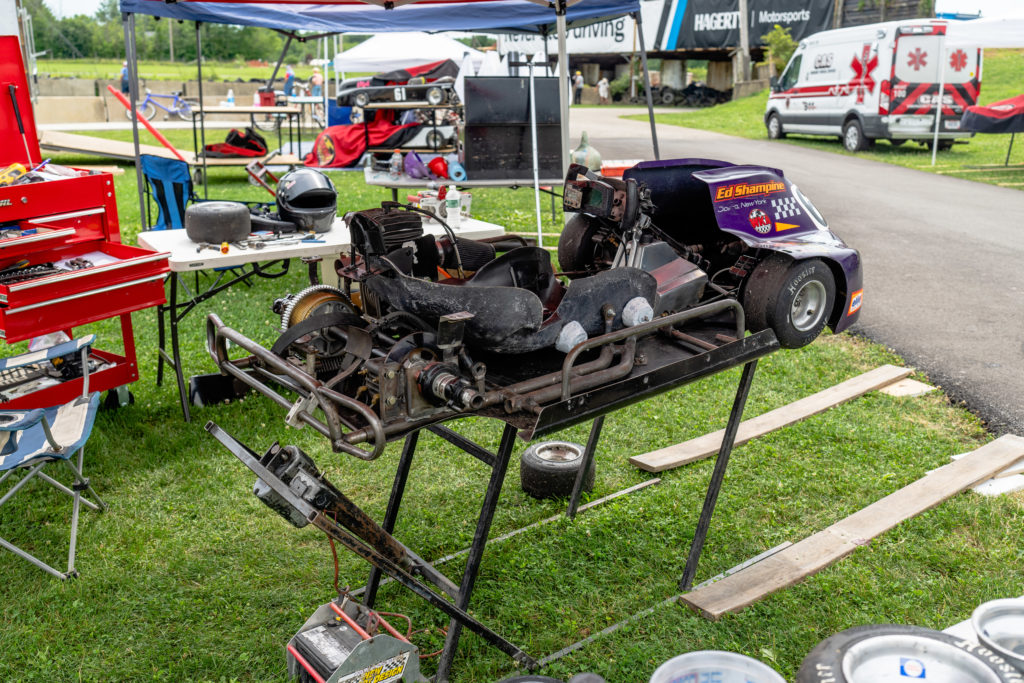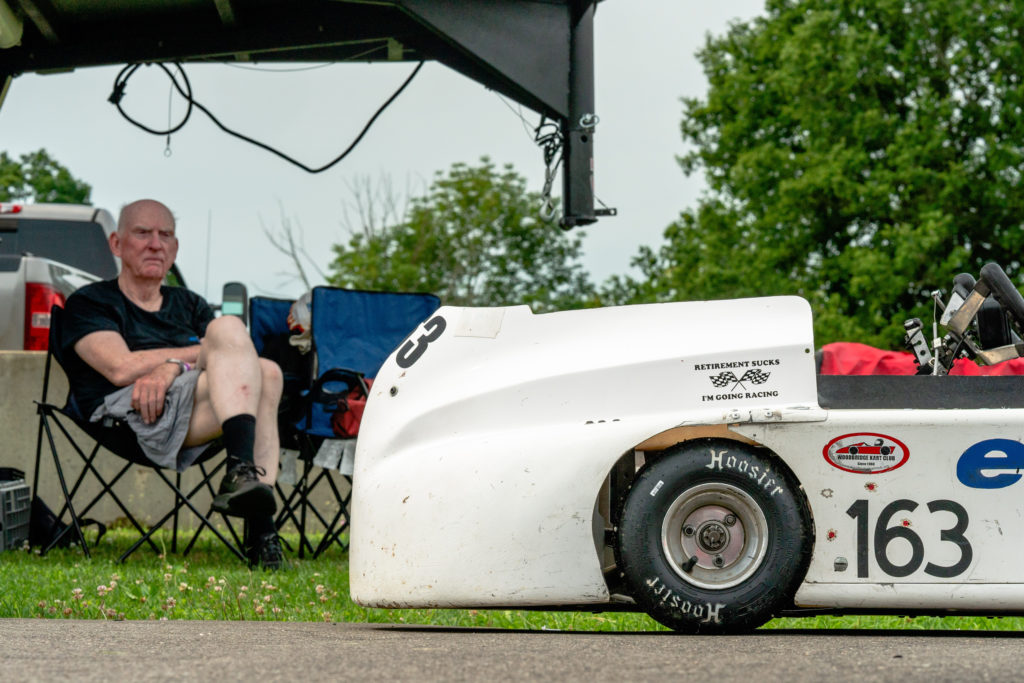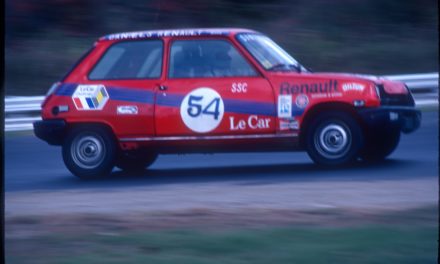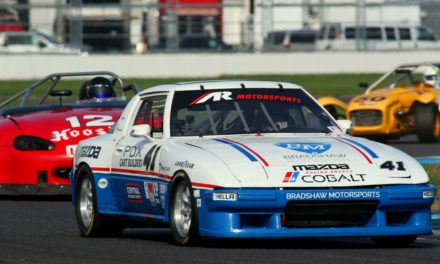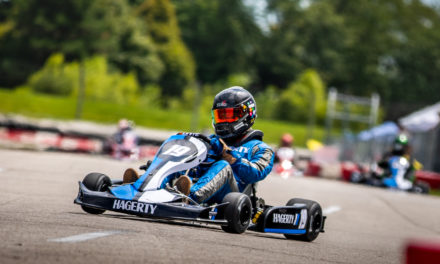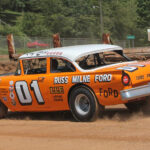“Hey, there’s a race coming up and we’ve got a kart that you can use. Want to join?”
My friend Robin Bank is never one to let an open seat in a race car—or in this case, a go-kart—go unoccupied. In that same vein, I’m not one to turn down the chance to race something new, so I gladly accepted. It was that decision in 2019 that sparked my passion for road race karting.
Road race karting, also known as enduro karting, typically takes place on full-size road courses and features races that run 30 minutes or longer. It’s considered a bit less intense than sprint karting, in which those seeking to be the next Herta or Verstappen prove their mettle on tighter tracks among fierce competition. Having raced cars for more than a decade, my introduction to road racing karts felt simultaneously wild and welcoming—an odd dichotomy of raw instinct on track mixed with warm collegiality in the paddock.
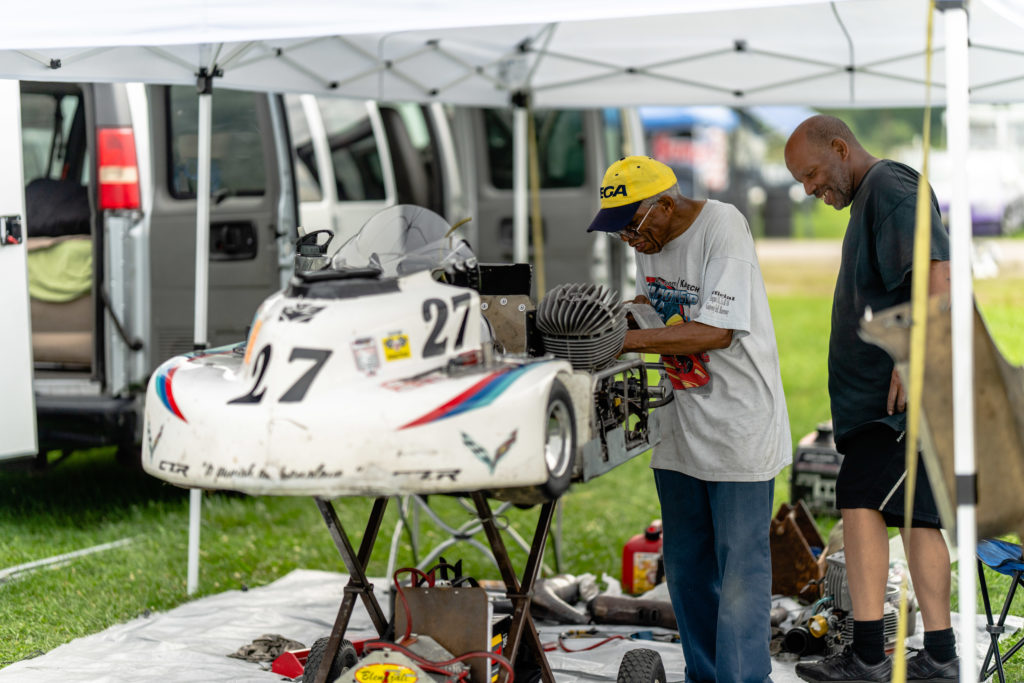
The off-track camaraderie seems to have its roots in friends and family, and these relationships are behind many racer’s enduro kart origin stories. After talking with competitors at the Dart Kart Club race weekend at Nelson Ledges last summer, I discovered the same ties are a big part of what keeps racers coming back, too.
“I don’t know exactly how my grandparents got into it,” said Jeremy Baldi, a third-generation go-karter and perennial frontrunner in the Superkart class. “My grandma and my grandpa would both race at a local sprint track—it was just one of those fun hobbies from the 1940s and 1950s.” Baldi’s dad got the racing bug, too. Naturally, Jeremy took to karting in his early 20s.
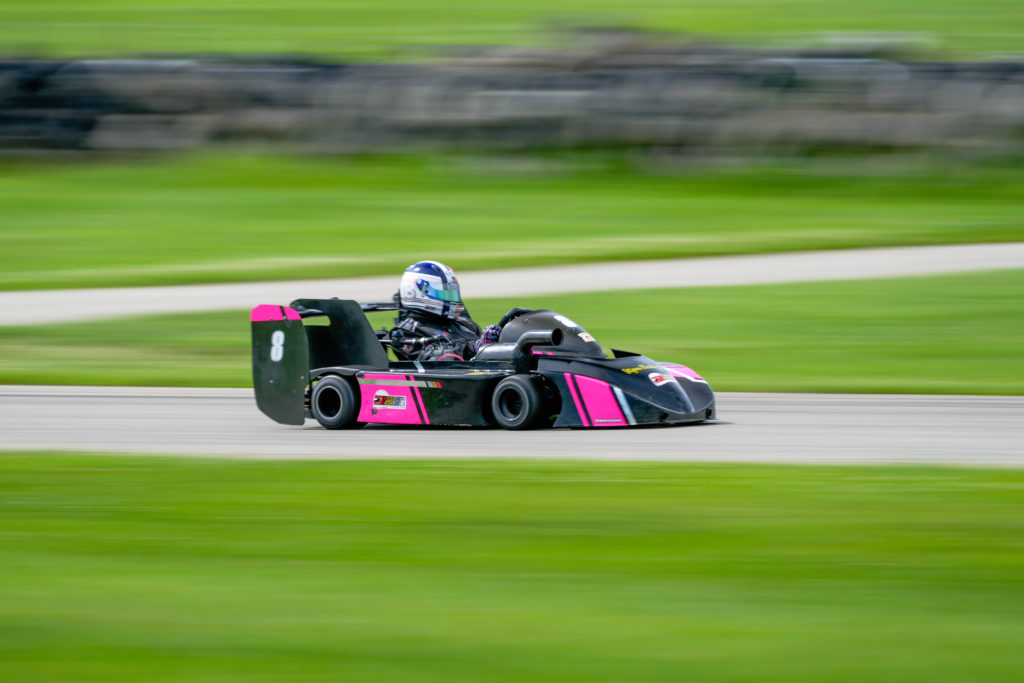
Baldi in his Superkart.
Karting veteran Ed Shampine shared a similar story: “I got into to kart racing on my first day of junior high. One of my classmates recognized my last name—my brother Jim was a successful supermodified racer—and shared that he raced go-karts. I went over to his house that weekend and ended up buying one of his older karts for $75, and it went from there. That was in the ’60s.”
Lest these warm-and-fuzzy responses make you think racing with Dart Kart Club is a light-hearted affair, I can confirm they’re all serious speed junkies out on the track. Baldi turns blistering lap times—at 1:05.669 on our race weekend, he’s faster at Nelson Ledges than every SCCA tin-top class track record (save Trans Am star Amy Ruman’s 1:02.4 GT1 effort). Shampine earned a first and third that weekend and has a wealth of championships over his decades in the sport. Clearly, Dart Kart competitors aren’t just at the track for a picnic.
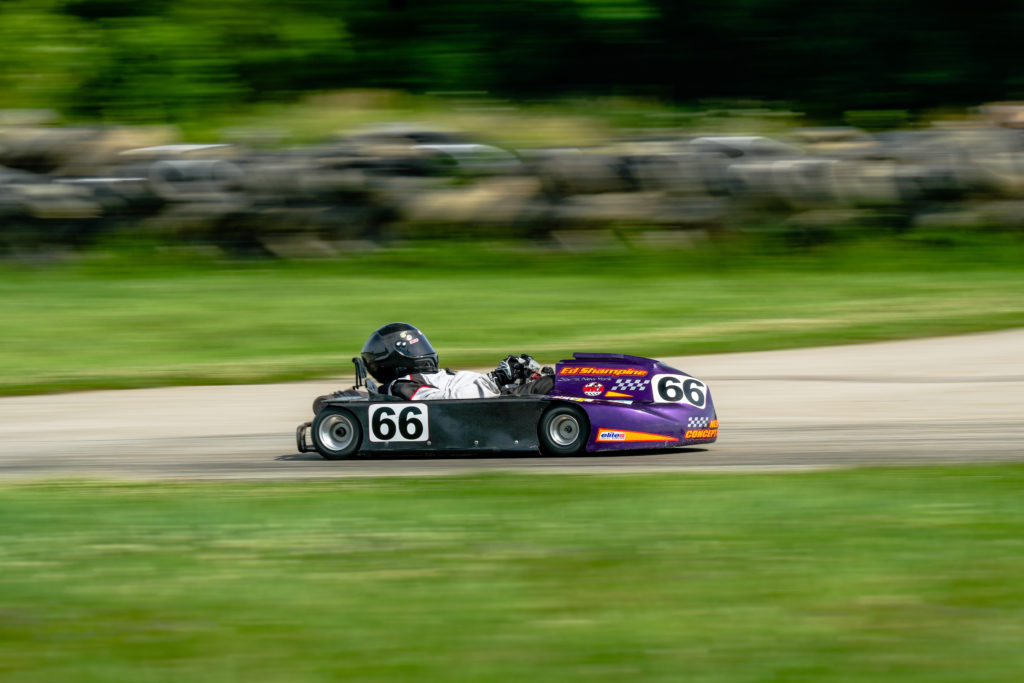
Shampine in the laydown kart.
That said, when I first introduced myself to Baldi, he offered me lunch. A quick conversation turned into an invitation to sit with his family and crew for a meal next to their camper. When I asked if road race karting has always had this atmosphere, Baldi nodded.
“To me, it’s always been very much this way, ever since I was a kid watching my dad race his kart at Mid Ohio,” he said. The friendliness extends beyond offering cold cuts, too. “Most of the people here are very competitive racers,” Baldi added, “but they’ll do anything to help get someone else on the track.”
Shampine echoed that sentiment. He used to own and operate New Concept Design, a company that made fiberglass bodywork for karts, and as a result he’s made dozens of karting friends over the years. “I pitted next to someone I sold parts to years ago and we ended up helping each other all weekend,” he said.
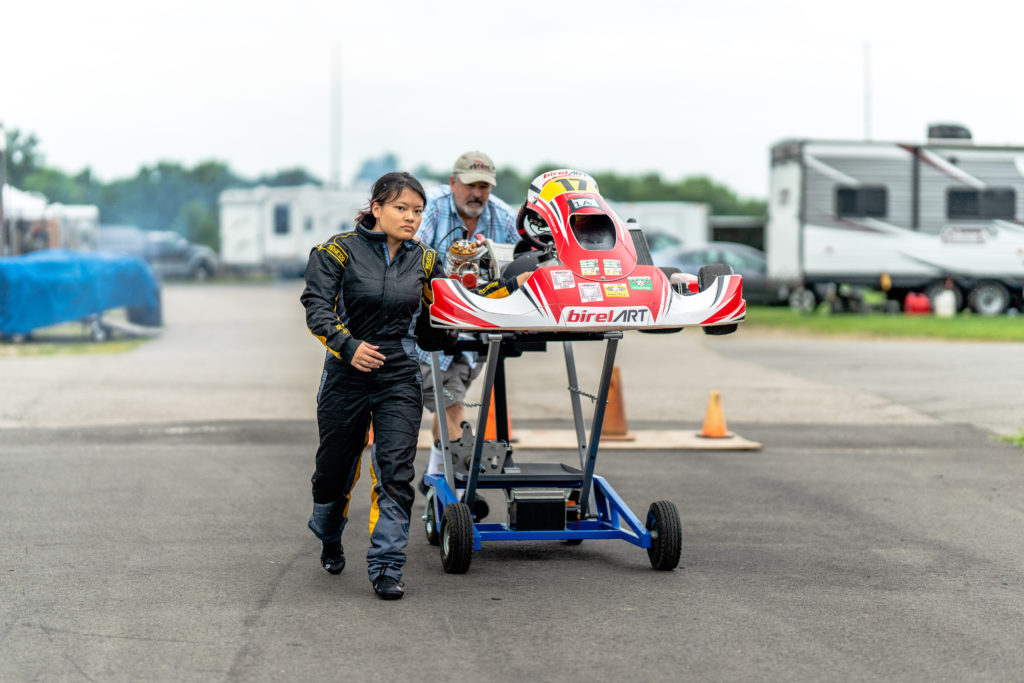
Clare Tracy pushes her kart toward the grid.
For every long-time racer like Baldi or Shampine on the Dart Kart entry list, there was also a relative newbie like me, or even a young gun planting their flag like Clare Tracy. The 19-year-old Michigan native ran in the same TaG (Touch and Go, so named for their onboard starter) class as me. Over the course of the weekend, she engaged in heated battles up front, logged the second-fastest time in class, and took home one win and a second place.
“I got my start in LO206 at East Lansing Kart Track,” Tracy said, referencing the four-stroke kart class that does a pint-size impression of Spec Miata racing (picture incredibly close-quarter battles, with emphasis on momentum, control, and drafting). “I started TaG sprint racing and eventually found road racing through organizations like Dart, CES [Championship Enduro Series], and AKRA [American Kart Racing Association]. It was a good fit.”
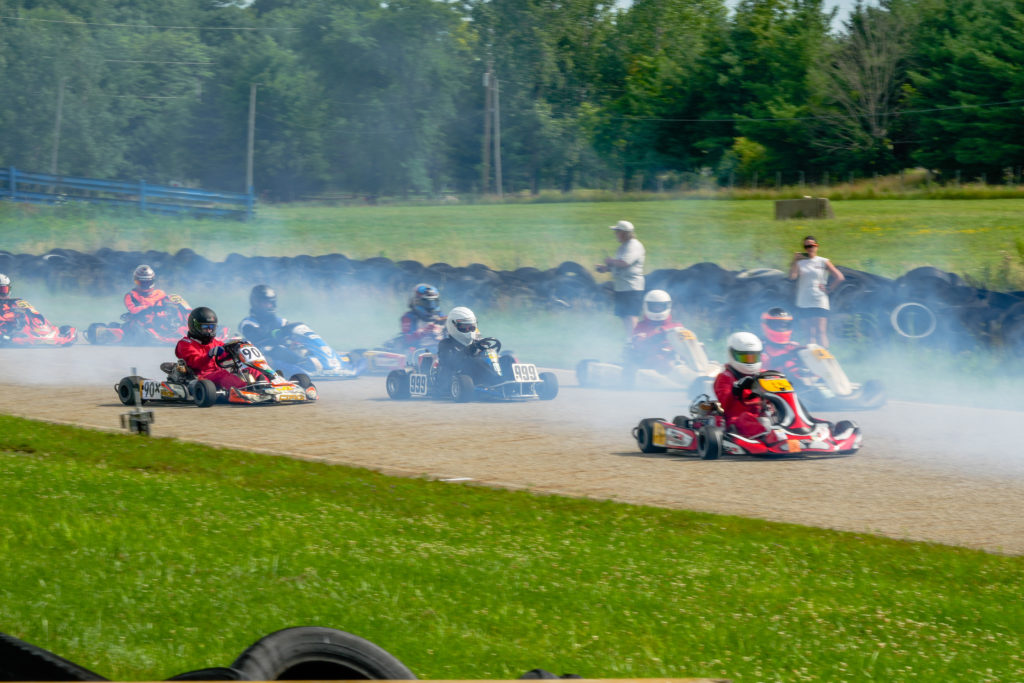
When asked if she plans on making the jump to cars, Tracy said no. “I am very content where I am. I can see where others would aspire to car racing, but I’m happy here. Everyone is here to have fun and to be there for each other.” She added: “It’s a learning experience for all of us.”
Shampine had the same zen outlook as Tracy: “[road racing] is about the competition, but it’s not stressful,” he said. “You’re kind of on a high when you leave, especially if you do well. If you have a bad weekend, you try to figure out what happened and work to get better. With any racing, what you put into it is what you get out.”
Along with the spread of age and experience, there were more female competitors at the Dart Kart event than I typically I see when I’m racing my Miata in the SCCA. Still, it’s a mostly male roster. I got the impression Tracy would like to see more women behind the wheel, but here, too, she had perspective: “Being a woman is relatively unique in karting, but once you’re out on the racetrack, it doesn’t matter who you are, your age, your skill level—you’re all racing. And that’s one of the high points for me: my competitors see me as a racer first.”
While the comments about kinship might suggest a small, intimate affair, it’s actually quite the opposite. The Nelson Ledges weekend welcomed hundreds of competitors. Dart Kart’s prior event at Mid Ohio—a bucket list track for many karters—drew nearly 800 racers from numerous classes. Whether you’re midpack with me, or running up front like the folks I interviewed, you’re going to have someone to race with.
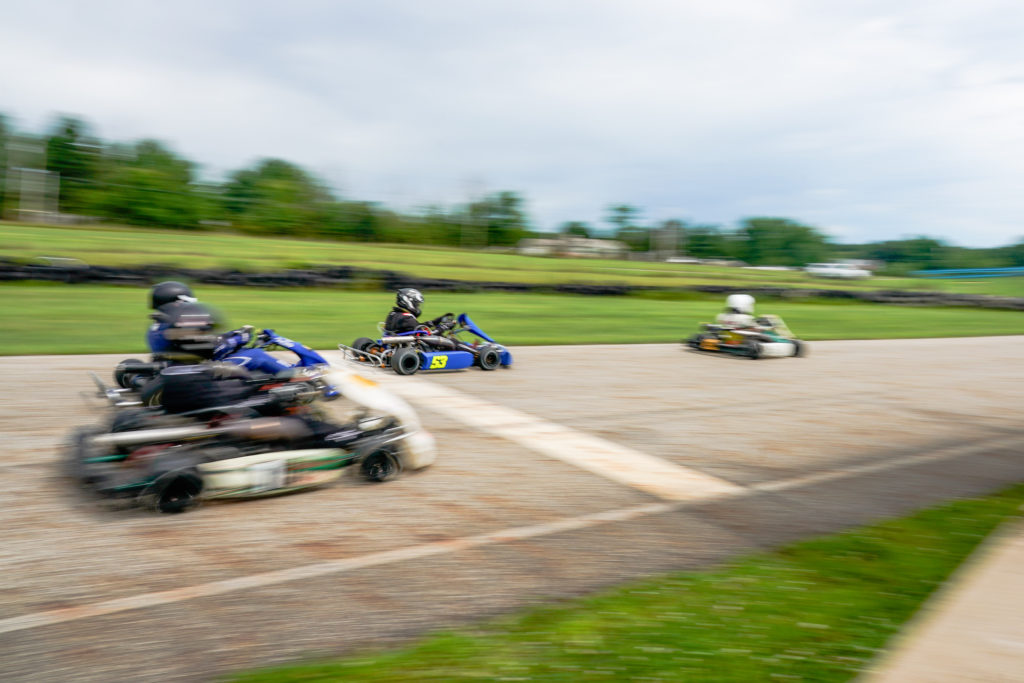
Hitting tracks originally intended for cars made for greater confidence racing in a larger group, at least in my experience as a newcomer. (Remember, I’m used to racing with a roof over my head and a cage around me.) Also, you come to understand every undulation of a track in a kart—that will be an added bonus when I return to these tracks in my car. I’m looking forward to racing at some sprint tracks in the near future, too, and my road race karting endeavors are sure to make that discipline feel less overwhelming.
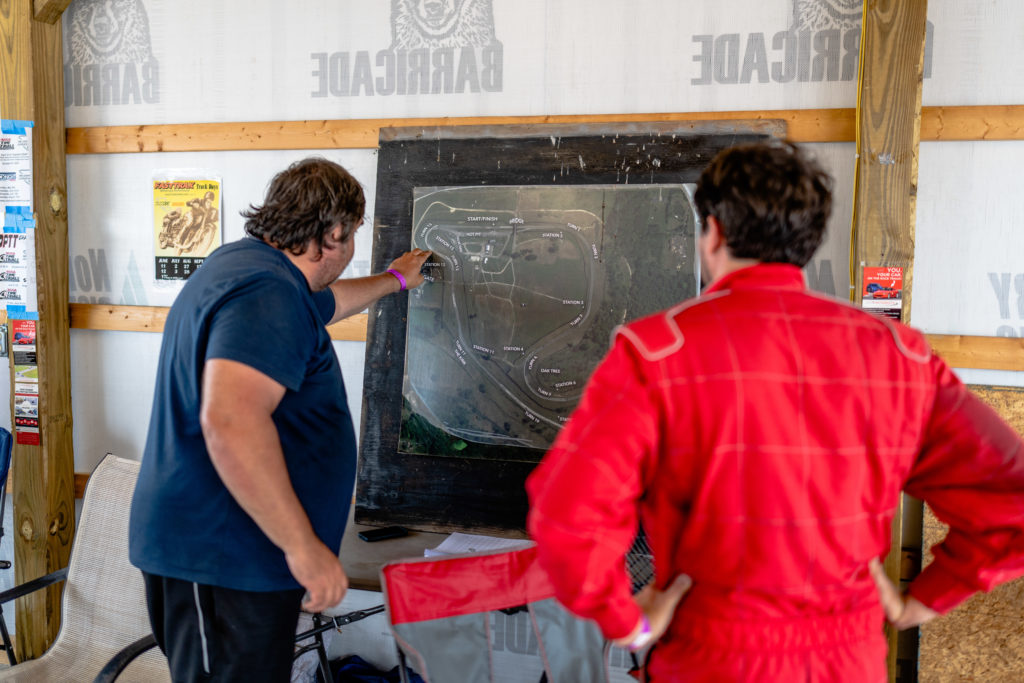
Robin Bank walks me through Nelson Ledge’s final set of turns.
After Robin Bank introduced me to the sport, I found that road racing a kart fit my goals perfectly—a welcome surprise. There was plenty of close racing to help me hone my craft and keep me hungry, and I enjoyed forming friendships with fellow competitors. I’m already prepping for this season and trying to recruit Imola managing editor Cameron Neveu into the road race karting fold. After all, racing’s more fun when you share it.
